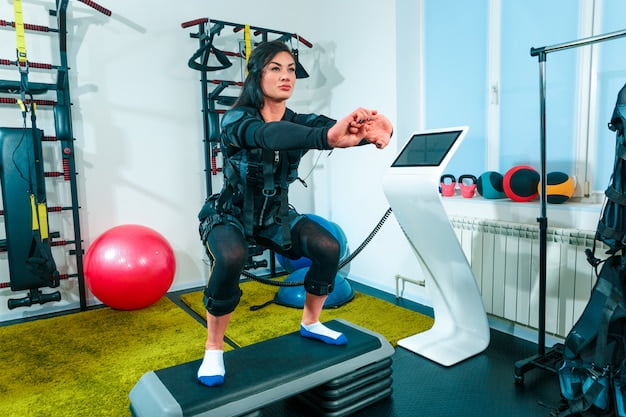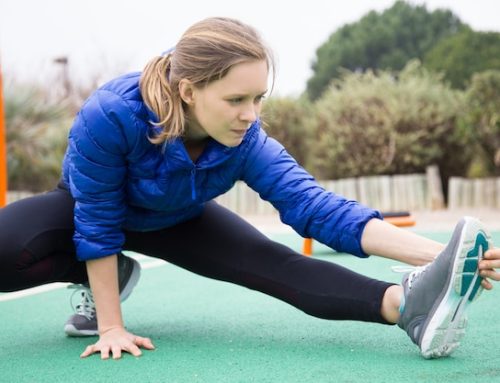Why is it so hard to lose mom pooch?
The mom pooch, also known as the postpartum belly, is a common issue among new mothers. This pouch of fat and loose skin around the midsection can be frustrating and difficult to get rid of, even with regular exercise and a healthy diet. So, why is it so hard to lose mom pooch?
- Diastasis Recti: Diastasis recti is a condition where the abdominal muscles separate during pregnancy to accommodate the growing baby. This separation can lead to a weakened and stretched abdominal wall, making it harder to regain core strength and flatten the stomach.
- Hormonal Changes: Pregnancy and childbirth cause significant hormonal changes in a woman’s body. These hormonal fluctuations can affect metabolism, fat distribution, and the body’s response to exercise, making it more difficult to lose weight and specifically target the abdominal area.
- Stubborn Fat Deposits: The mom pooch often involves a combination of excess fat and loose skin. Stubborn fat deposits around the abdomen can be resistant to traditional weight loss efforts, requiring specific strategies to address them effectively.
- Muscle Weakness: Pregnancy and childbirth can weaken the core muscles, including the transverse abdominis, pelvic floor, and obliques. Strengthening these muscles is crucial for improving core stability and reducing the appearance of the mom pooch.
- Posture and Alignment: Pregnancy can lead to changes in posture and alignment, causing the pelvis to tilt forward and the lower back to arch excessively. This posture can contribute to the appearance of a protruding abdomen. Correcting posture and realigning the body can help reduce the mom pooch.
It’s important to note that each woman’s experience is unique, and not all women will struggle with losing the mom pooch to the same extent. However, with consistency, patience, and a multifaceted approach that includes targeted exercises, healthy eating habits, core strengthening exercises, and overall fitness, it is possible to reduce and eventually eliminate the mom pooch.
How can fix mommy belly
Remember to consult with a healthcare professional, such as a postpartum fitness specialist, physical therapist, or registered dietitian, to receive personalized guidance and support based on your individual needs and any specific considerations related to your postpartum recovery. Here’s a table outlining strategies to help address the “mommy belly” or postpartum abdominal bulge:
Here’s a table outlining strategies to help address the “mommy belly” or postpartum abdominal bulge:
| Strategies | Description |
|---|---|
| Diastasis Recti Exercises | Engage in specific exercises to restore and strengthen the abdominal muscles, focusing on deep core activation and breathing techniques. Consult with a postpartum fitness specialist or physical therapist for guidance. |
| Core Strengthening | Incorporate exercises that target the entire core, including rectus abdominis, obliques, transverse abdominis, and pelvic floor muscles. Examples include planks, bridges, bird dogs, and pelvic floor exercises (Kegels). |
| Cardiovascular Exercise | Engage in regular aerobic activities such as brisk walking, jogging, swimming, cycling, or aerobic classes to burn overall body fat, including abdominal fat. |
| Healthy Eating Habits | Follow a balanced, nutritious diet with whole, unprocessed foods, emphasizing fruits, vegetables, lean proteins, whole grains, and healthy fats. Limit intake of sugary and processed foods. |
| Posture Awareness | Practice good posture by engaging core muscles, lengthening the spine, and avoiding excessive slouching or arching of the back. |
| Gradual Weight Loss | Aim for gradual, sustainable weight loss at a rate of 1-2 pounds per week through a combination of exercise and a balanced diet. |
| Patience and Consistency | Be patient with your postpartum journey and stay consistent with your exercise routine and healthy eating habits. |
Hormonal Changes
During pregnancy, the body experiences significant hormonal changes that can affect weight gain and loss. The hormone relaxin, for example, is released to help relax the muscles and ligaments in the pelvis to prepare for childbirth. However, this hormone can also cause issues in the midsection by loosening the abdominal muscles, making it harder to tone and tighten the area after birth.
Inconsistent Exercise
New mothers may find it difficult to maintain a consistent exercise routine, especially with a newborn to care for. Sleep deprivation, feeding schedules, and other responsibilities can take priority over exercise, making it challenging to get the recommended 150 minutes of moderate exercise per week.
Dietary Changes
Many new mothers change their diets to accommodate breastfeeding or to lose weight quickly. However, extreme calorie restriction or fad diets can slow metabolism and cause the body to hold onto fat, making it harder to lose the mom pooch.
C-Section Recovery
Mothers who have had a c-section may find it even harder to lose the mom pooch due to the extended recovery time and the surgical incision. The abdominal muscles may have weakened or separated during pregnancy, making it harder to strengthen them post-surgery.
Lack of Core Strength
Even if a mother is consistent with exercising, she may still struggle to lose the mom pooch if she has weak core muscles. The rectus abdominis muscles, which run vertically down the abdomen, are often weakened during pregnancy and require specific exercises to strengthen.
High-Intensity Interval Training
One effective way to target the mom pooch is through high-intensity interval training (HIIT). This form of exercise involves alternating short periods of intense exercise with periods of rest or low-intensity exercise. HIIT has been shown to be effective in reducing body fat, including in the midsection.
Sample HIIT Workout
Here is a sample HIIT workout that can help new mothers target the mom pooch:
| Exercise | Duration | Intervals |
|---|---|---|
| Jumping jacks | 30 seconds | 3 |
| Plank | 30 seconds | 3 |
| Mountain climbers | 30 seconds | 3 |
| Bicycle crunches | 30 seconds | 3 |
| Rest | 60 seconds | – |
Diet for a flat stomach after childbirth
A radical diet just after giving birth is unlikely to be possible. The postpartum period means breastfeeding, and this is not the best time to lose weight. The baby needs valuable nutrients, protein and fat. However, a sagging abdomen after pregnancy can be gently firmed and reduced in circumference with the help of diet. During the confinement period, fast food, deep-fried, spicy and hard-to-digest foods should be completely avoided. These have a detrimental effect not only on the abdomen, but above all on the health of the nursing baby. During this period, it is recommended to drink plenty of mineral water, eat fruit and vegetables and lean meat (preferably boiled or stewed).
The skin on the abdomen after pregnancy needs to be cared for from the outside. Creams and oils dedicated to women after childbirth are essential. Stretch marks on the abdomen after pregnancy occur as a result of stretching of the skin. The characteristic white lines are cracked collagen-elastin fibres. They are purple in colour at first, but become whitish over time. Similar changes can be observed on the breasts and buttocks. It is worth buying preparations that contain vitamin E and marine botanicals. Massages with a bamboo brush are also a good option. These are performed in the morning and evening before bathing. The skin on the abdomen is brushed for a few minutes in a circular motion. However, it is worth being patient, because stretch marks on the abdomen after pregnancy do not disappear overnight. It takes time and proper care.
Conclusion
Losing the mom pooch can be a frustrating and challenging process for new mothers. However, understanding the reasons why it can be difficult can help mothers develop a more effective exercise and diet plan. High-intensity interval training, along with a balanced diet and consistent exercise routine, can help target the midsection and reduce the mom pooch. Remember, the most important thing is to be patient and take care of yourself and your baby during this exciting and transformative time.






